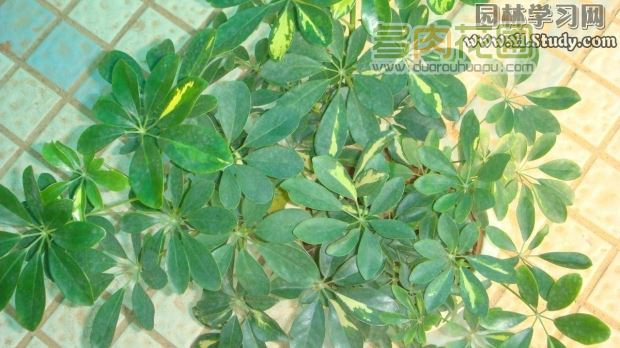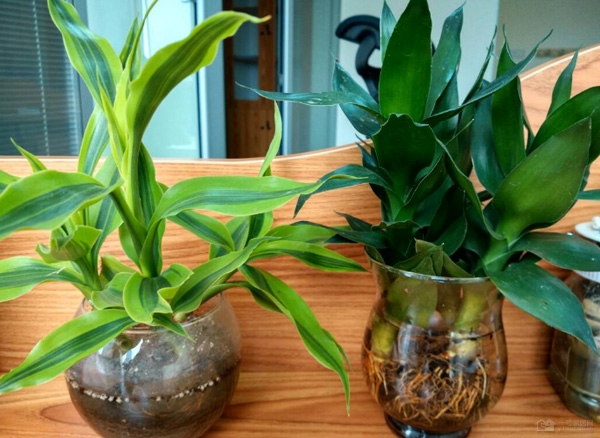The Culture method of Calamus angustifolia
According to the breeding method of flower-leaf goose palm wood, the height of flower-leaf goose palm wood is 30cm to 80cm, the stem is erect, the branches are compact, the palmately compound leaves have long stalks, and the leaflets have 5-9 pieces, leathery, dark green and glossy, inlaid with irregular macula, beautiful plant shape, strong hierarchical and three-dimensional sense, and high ornamental value.
All kinds of pots can be used to cultivate flower leaf goose palm firewood. If you use plastic pots and porcelain pots that are more beautiful and have poor permeability, you should put broken hard plastic foam blocks at the bottom of the basin to enhance air permeability, drainage capacity and prevent rotting roots. Goose palm wood grows best in loose and fertile slightly acidic sandy soil. Rotten leaf soil, vegetable garden soil and sand can be mixed at 5:3:2, and some nitrogen, phosphorus and potassium compound fertilizer can be added as culture soil. Turn the basin and change the soil once a year before sprouting, if the plant growth is too high and the size of the basin is out of proportion, it can be cut again at this time.
Under the condition of high air humidity and moist basin soil without waterlogging, the wood grows best. During the growing period, it should be often watered and sprayed to the branches and leaves, which can not only increase the air temperature, benefit its growth, but also remove dust and make the leaves fresh and bright. During the dormant period in winter, water similar to room temperature should be irrigated and sprayed once every 10 days. Apply nitrogen, phosphorus and potassium liquid fertilizer or compound fertilizer once in half a month or so, and avoid applying nitrogen fertilizer alone, otherwise the macula is easy to disappear and the ornamental value is reduced. No fertilizer is applied in the middle of summer and severe winter.
Goose palm wood originally grows in the subtropical forests of Guangdong and Fujian in China, and likes a warm and semi-shady environment. Long-term indoor viewers should be placed in a place with good ventilation and sufficient scattered light, and it is better to see small oblique light for 3-4 hours every day. If overcast for a long time, not only the macula is easy to disappear, the leaves are dim, and the growth is thin, and the ornamental value is reduced. Those placed outside should avoid strong light exposure around noon from June to September. The most suitable temperature for its growth is 14: 30 ℃. It can overwinter outdoors when the minimum temperature is above 0 ℃ in winter. When it is below 0 ℃, it should overwinter indoors and keep the room temperature above 5 ℃.
Goose palm wood, white flowers in winter, fragrant, dark green cones. Cutting propagation from May to June, cut off about 10 cm of branches as cuttings, cut off the lower leaves, dip them in sulfur powder or plant ash, and then insert them in plain sandy soil, place in the shade and often spray water to moisturize, take root and send new leaves in about one month, and then plant them in pots on the soil. the above is the introduction to the breeding method of Chamaecarpa glabra.
Culture methods and matters needing attention of Scutellaria oleifera
Euphorbia angustifolia is commonly used in cutting, striping, sowing and propagation.
Cutting propagation technique
From the mother plant that has been growing for several years, cut the annual branches 6cm to 8cm, or combine with changing pots and re-cutting in spring, and the cut branches are used as cutting materials. Remove the inserted leaves and cut them in a plastic flowerpot with a pre-soaked perlite as substrate and a □ diameter of 15cm to 20cm. Add a tray to the bottom of the pot to receive the exudate. 3 plants or individual plants in each pot can take root about one and a half months after cutting, and should be kept moist with regular irrigation after cutting. Put it in the room with low light after insertion, strengthen the management of fertilizer and water, pour nutrient solution after rooting, replenish liquid once a week in the basin, and 100ml every time.

1. Habits
Sex likes warm, hot and humid climate, grows fast and propagates with seeds. The suitable temperature for growth is 20 ℃ to 30 ℃, and it should be no less than 5 ℃ in winter. If the temperature is below 0 ℃, the plant will be frozen and the leaves will fall, but if the stem is intact, new leaves will sprout again in the following spring. Goose palm wood likes to be wet and afraid of dry. Under the condition of high air humidity and sufficient soil moisture, the stems and leaves grow luxuriantly. But too much water, resulting in waterlogging, will cause rotten roots. If the basin soil is short of water or wet and dry for a long time, the phenomenon of falling leaves will occur. Goose palm wood has a certain ability to adapt to temporary drought and dry air. Goose palm wood can adapt to a wide range of light, and can grow in full sunshine, half-day or half-shade environment. However, the intensity of light has a certain relationship with the leaf color, the leaf color tends to be lighter when the light intensity is strong, and the leaf color is thick green when it is semi-overcast. The color of the variegated leaf species is more bright in the bright light. The soil should be rich, loose and well-drained sandy loam. Potted soil is a mixture of peat soil, rotten leaf soil and coarse sand.
2. Reproductive technology
Euphorbia angustifolia is commonly used in cutting, striping, sowing and propagation.
Cutting propagation technique
From the mother plant that has been growing for several years, cut the annual branches 6cm to 8cm, or combine with changing pots, re-cutting in spring, and cutting the branches as cutting materials. Remove the inserted leaves and cut them in a plastic flowerpot with a diameter of 15cm to 20cm in a pre-soaked perlite, with a tray at the bottom to receive the exudate. 3 plants or individual plants in each pot can take root about one and a half months after cutting, and should be kept moist with regular irrigation after cutting. Put it in the indoor weak light place after insertion, strengthen the fertilizer and water management, pour the nutrient solution after taking root, and replenish the liquid once a week in the basin, 100ml each time.
Note: do not replenish water on the day of rehydration, so as not to affect the concentration of nutrient solution. The basin is inserted and propagated to take a 6-inch-8-inch basin, the bottom hole is blocked with small stones, and the perlite or fine and clean river sand is installed in the middle. The rock surface or sand surface is low and the edge of the basin is 1 cm high. If the basin is filled with perlite, it is best to press a layer of river sand (to increase compactness). At this time, 10 cm-12 cm cuttings can be cut from adult flower leaf goose palm wood, and the bottom is cut into an oblique shape. If there is a little rooting powder, you can also touch a little rooting powder. Insert 3 plucks of cuttings into sand or perlite, 3-4 plants in each basin, pour water thoroughly after insertion, place the basin in a plastic basin or other container filled with water, the water level in the container should always be kept higher than 1 ℃ 2 of the cuttings basin, then place a transparent plastic cover on the cuttings basin in a bright place of scattered light, keep the temperature at 15 ℃-25 ℃, and form cuttings roots after 30-40 days. At this time, the goose palm firewood seedlings can be transplanted into a 6-inch-8-inch basin, and the basin soil should be filled with fine quality agricultural fertilizer, humus soil and fine sand according to 3 ∶ 2 ∶ 1, fully mixed fertile soil, watered thoroughly after planting, placed in a semi-shaded place for 7 days, and then transferred to a bright place for management.
Insert and breed large bottles of empty Coca-Cola or tall glass bottles, rinse clean and fill them with clean water (tap water). Cut goose palm wood cuttings, fixed and inserted into the bottle (the bottom of the cuttings is 1 cm away from the bottom of the bottle). Each bottle can be 2-3 sticks, covered with a transparent plastic bag, placed in a bright place, and the temperature is kept at 15 ℃-25 ℃ for 30-35 days. The white root of 0.5 cm-1 cm long grows at the bottom of the cuttage, and the upper basin can be removed according to the above method.
Diseases and insect pests: leaf spot and anthracnose, shell insects, red spiders, thrips and leaf moths.
Garden use: the plant is compact, the crown is neat and graceful for ornamental use, or used as a shelter tree species in the garden.
- Prev

How to raise rich bamboo in Phnom Penh
How to raise rich bamboo in Phnom Penh? at present, there are more and more businessmen supplying rich bamboo in the flower trade market. There are two kinds of rich bamboo varieties, one is all-green leaves, the other is golden leaf edge, also known as Phnom Penh rich bamboo, the latter is more expensive. This kind of rich bamboo in Phnom Penh is cut into pieces.
- Next

Phalaenopsis has long leaves but does not blossom. Why don't Phalaenopsis blossom? what about the reason why Phalaenopsis does not grow foil?
Why Phalaenopsis does not bloom, Phalaenopsis cultivation needs special management, but it does not mean that it can not grow in the room, there are a large number of orchids can grow well in the general room. In order to successfully cultivate Phalaenopsis, light, temperature and humidity must be strictly controlled.
Related
- Fuxing push coffee new agricultural production and marketing class: lack of small-scale processing plants
- Jujube rice field leisure farm deep ploughing Yilan for five years to create a space for organic food and play
- Nongyu Farm-A trial of organic papaya for brave women with advanced technology
- Four points for attention in the prevention and control of diseases and insect pests of edible fungi
- How to add nutrient solution to Edible Fungi
- Is there any good way to control edible fungus mites?
- Open Inoculation Technology of Edible Fungi
- Is there any clever way to use fertilizer for edible fungus in winter?
- What agents are used to kill the pathogens of edible fungi in the mushroom shed?
- Rapid drying of Edible Fungi

